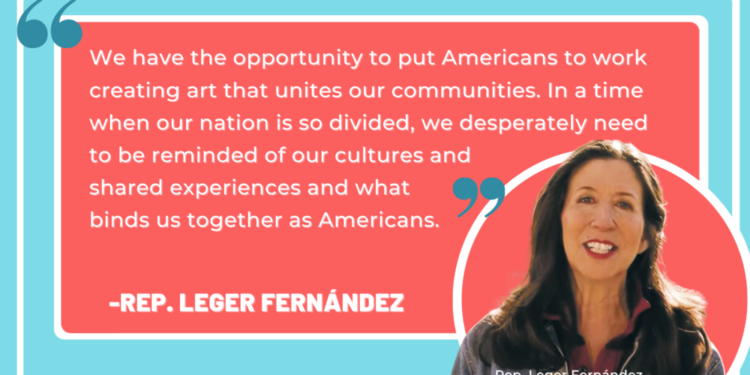The National Endowment for the Arts is the largest grant-making and issuing public sector organization that funds arts agencies and individuals. Depending on what political administration is available in the U.S. at a given time, it is interesting to study its relationship to the National Endowment for the Arts. Some administrations cut funding for the organization, and others expand it. During President Obama’s first term, he was able to collect the political capital to implement the largest expansion of arts grants in many years. Now there is a new bill that is receiving bipartisan support and aims to help artists and arts organizations.
Congress is currently discussing the Creative Economy Revitalization Act (CERA), which proposes $300 million in federal grants for art commissions and workers. If the bill passes it will bring hundreds of millions of dollars of economic activity to arts and cultural districts throughout the U.S., it aims to stimulate the creative economy and create more jobs.
CERA was introduced in the House of Representatives on August 13th. The bill is modeled after the Works Progress Administration (WPA) and Comprehensive Employment and Training Act (CETA), two successful job creating programs. The bill amends the Workforce Innovation and Opportunity Act of 2017, a job creation plan with $3.3 billion in resources for programs in 2022 through 2024. If the bill passes, the Department of Labor and the National Endowment for the Arts will collaborate and follow policies on how to allocate grants to American arts organizations and artists.
The bill started in the House and is now on the Senate floor. It has been endorsed by 175 arts organizations, as well as many Democrats and Republicans.
“We herald the bold and decisive leadership of Representative Leger Fernández to address the needs of the 5.2 million American Arts Workers who contribute $919 billion to this country’s GDP,” said Jennifer Makholm and Carson Elrod, co-founders of Be an #ArtsHero and Arts Workers Unite. “There is no American economic recovery without a robust Arts & Culture recovery.”
The arts add almost a trillion dollars of economic activity to many cities throughout the country. This has been the case for many years; however, the leadership in the federal government believes now is the time to provide further stimulation to grow an important sector during a tough time for workers due primarily to the COVID-19 pandemic. Since the start of the pandemic, more than 2.7 million arts workers have lost their jobs and creative jobs in general dropped 53% from the previous year.
The bill asserts the definition of an “Arts Worker” as professionals with experience in artistic production of “ideas, content, goods, and services.” This includes individual artists, schools, public and private organizations, outdoor performances and events such as art fairs, visual and written media focused on U.S. history, as well as individuals and organizations that produce a variety of fine and performing arts projects.
While this bill has many supporters, it will take some time for Congress and President Biden to lay out all the details and rollout a distribution process based on eligibility in order to get these grants to the artists and organizations that need them the most.


